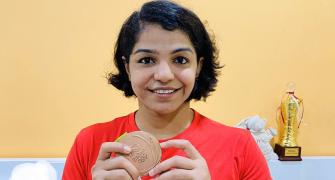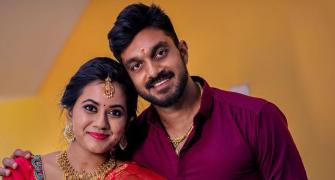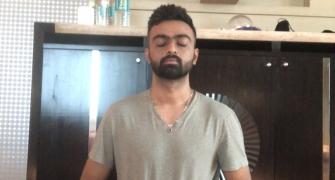Beyond the empty stands and coronavirus-induced delay, this year's Indianapolis 500 will see another profound change at the famed Brickyard on Sunday -- for the first time in 21 years, there are no female drivers on the starting grid.
"If we just quietly pretend the problem is not happening, the problem is not going to go away," said Pippa Mann, who competed at the Indy 500 eight times and was the only woman in the field last year, but was unable to get funding to compete this year.
"Anyone who has ever worked with female drivers at any level (...) will turn around and tell you that it is way tougher to try and find the funding and support for female racers who have the same record (as) a male racer," said Mann, an outspoken advocate for the next generation of female drivers.
"I want them to know they’re not fighting alone. Because for most of my career I felt like I was fighting alone."
American Janet Guthrie was the first woman to drive in the Indy 500 in 1977. Nine women have qualified in the last five decades and the race has featured female competitors every year since 2000.
Katherine Legge, a British driver who has twice competed at the Indy 500 and in January led her second consecutive all-female team at the Rolex 24 at Daytona, said this year's field is "more than a coincidence".
"What IndyCar need to do is they need to have more diversity on the Road to Indy," said Legge, referring to the development program. "Because that’s the only way that you’re going to get competitive people go up to IndyCar."
Legge, recovering from leg surgery after a crash last month, said more female team owners and people in the upper echelons of the sport would help. [nL3N2EN1LN]
Retired driver Danica Patrick told reporters on Wednesday that despite 2020's all-male field, female drivers have made significant progress over the long term.
"The story always used to be that there is one, that there is a female in the race," said Patrick, who is also working at the race for NBC broadcast team.
"We need to look at the bigger version to understand that it’s far, far more normal now to have females in the race."
IndyCar and IMS, which last month launched the Race for Equality & Change initiative to increase diversity in the sport, said; "We believe 2020 is an exception rather than the norm."
Indy 500 still aims to be 'Greatest Spectacle in Racing'
In May or August, 300,000 spectators or none, the Indianapolis 500 continues to promote itself as "The Greatest Spectacle in Racing" - not even a global pandemic proving capable of applying brakes to the shameless boast.
As sporting extravaganzas go, the Indy 500 has rarely disappointed and Sunday's race offers no reason to reign in the hype with an Andretti sitting on pole.
Further back in the 33-car field are twice Formula One world champion Fernando Alonso, bidding to complete motorsport's elusive Triple Crown and Helio Castroneves trying, for perhaps the final time, to enter the Brickyard's exclusive club of four-time winners.
The Andrettis may be motor racing royalty but when it comes to the Indianapolis Motor Speedway (IMS) and the Indy 500, their results are less than regal.
The Andrettis have ruled over open wheel racing in the United States with a string of victories that have connected generations -- father (Mario), to son (Michael), to grandson (Marco).
But for all their success at circuits around the world, Mario's Indy 500 victory in 1969 stands alone - the clan's cruel luck at the Brickyard giving rise to the "Andretti Curse".
"This place means so much to us as a family," said Marco, after becoming the first Andretti to start the Indy 500 from pole since Mario 33-years ago. "We've just been through so many ups and downs at this place."
Joining Andretti on the front row are two former-winners New Zealander Scott Dixon, a five-time IndyCar drivers champion, and Japan's Takuma Sato.
Starting on the ninth row sits Alonso who will launch his bid to become the second driver after the late Graham Hill to complete the Triple Crown of Motorsport, which also includes wins at the Monaco Grand Prix and Le Mans 24 Hours.
It may be the last chance in some time for Alonso to realize his dream as he is due to return to Formula One with Renault next season after two years away from Grand Prix racing.
It could also be the last real chance for Castroneves to join AJ Foyt, Rick Mears and Al Unser Sr as the only four-time winners.
The 44-year-old Brazilian no longer drives full-time on the IndyCar circuit but former-team boss Roger Penske continues to provide him with a competitive car and a chance to secure a history victory.
Forced from its traditional May 24th date by the novel coronavirus, the only elements missing from Sunday's showcase appear to be fans and a woman in the starting field.
There will be no other sporting event staged during the COVID-19 pandemic where the absence of spectators will be more jarring.
Billed as world's largest single day sporting event an estimated 300,000 motor racing fans would fill the sprawling grandstands surrounding the 2.5 mile oval where thousands more pour into the infield for a day of high-octane excitement.
There will also be a noticeable void on the grid as, for the first time since 1999, there is no female driver in the field.











